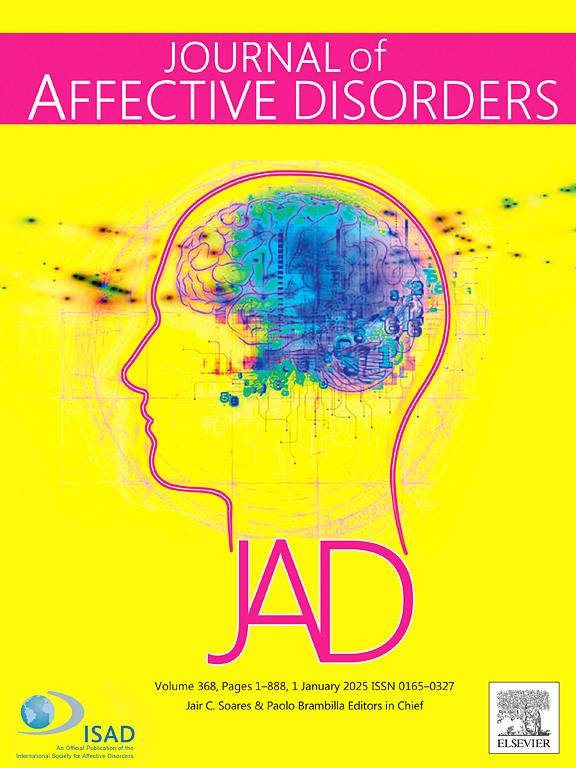电休克治疗青少年和成人抑郁症:疗效、认知功能及相关影响因素。
IF 4.9
2区 医学
Q1 CLINICAL NEUROLOGY
引用次数: 0
摘要
背景:电痉挛疗法(ECT)是一种安全有效的抑郁症治疗方法,但其在青少年中的疗效和认知效果尚不清楚。本研究比较了标准化ECT治疗青少年和成人抑郁症的效果,并分析了影响因素。方法:对206例接受抗抑郁药物联合电痉挛治疗的重性抑郁症患者进行观察性研究。分别用HAMD和MoCA评估抑郁症状严重程度和认知功能。采用协方差分析对协变量进行校正。结果:共纳入130名青少年和76名成年人。经协变量调整后,成人的有效率为86.5 %,显著高于青少年的65 % (p )。结论:ECT与抑郁症状的缓解和注意力的改善有关,但也有整体认知功能下降的趋势。此外,电痉挛疗法在成人中似乎比在青少年中更有效。本文章由计算机程序翻译,如有差异,请以英文原文为准。
Electroconvulsive therapy in adolescents and adults with depression: Effects, cognitive function and related influencing factors
Background
Electroconvulsive therapy (ECT) is an effective and safe treatment for depression, but its efficacy and cognitive effects in adolescents remain unclear. This study compares the effects of a standardized ECT protocol on adolescent and adult depression patients and analyzes influencing factors.
Methods
A total of 206 patients with major depressive disorder receiving combined antidepressant and ECT treatment were enrolled in this observational study. Depressive symptom severity and cognitive function were assessed by the HAMD and MoCA, respectively. Covariates were adjusted for using analysis of covariance.
Results
A total of 130 adolescents and 76 adults were enrolled. After adjusting for covariates, the effective rate for adults was 86.5 %, significantly higher than the 65 % observed in adolescents (p < 0.01). Similarly, the remission rate for adults was 45.6 %, compared to 28.1 % in adolescents (p < 0.05). Regression analysis revealed that the number of hospitalizations (p < 0.01), baseline psychotic symptoms (p < 0.01), and MoCA cognitive-language scores (p < 0.05) were predictive factors for ECT efficacy in adolescent depression patients. Moreover, ECT was associated with improvements in attention, but declines were observed in overall cognitive function, language ability, and delayed memory. Additionally, after treatment of ECT, adolescent depression showed a significant improvement trend in MoCA naming function, whereas adult patients exhibited a significant deterioration (p < 0.05).
Conclusion
ECT was associated with alleviation of depressive symptoms and improvement in attention, but a trend of decline in overall cognitive function was also observed. Moreover, ECT appears more effective in adults than adolescents.
求助全文
通过发布文献求助,成功后即可免费获取论文全文。
去求助
来源期刊

Journal of affective disorders
医学-精神病学
CiteScore
10.90
自引率
6.10%
发文量
1319
审稿时长
9.3 weeks
期刊介绍:
The Journal of Affective Disorders publishes papers concerned with affective disorders in the widest sense: depression, mania, mood spectrum, emotions and personality, anxiety and stress. It is interdisciplinary and aims to bring together different approaches for a diverse readership. Top quality papers will be accepted dealing with any aspect of affective disorders, including neuroimaging, cognitive neurosciences, genetics, molecular biology, experimental and clinical neurosciences, pharmacology, neuroimmunoendocrinology, intervention and treatment trials.
 求助内容:
求助内容: 应助结果提醒方式:
应助结果提醒方式:


